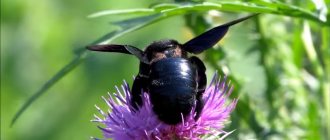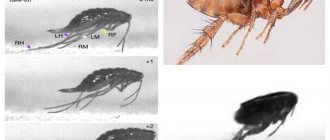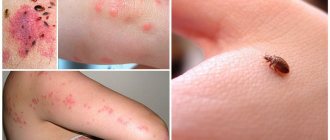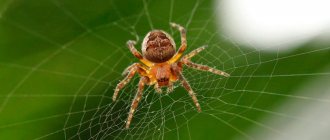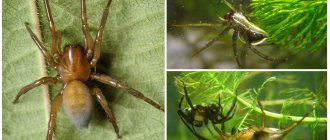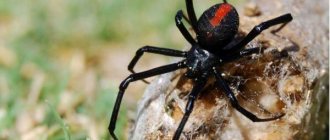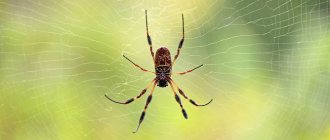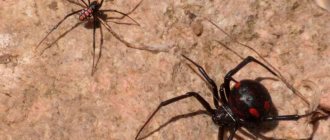An unusual creature came into the field of view of our site - a haymaker. Their common name is kosinozhki, or koselapki. All because of the unusual structure of the limbs. These are representatives of arachnids, and according to zoologists, there are about 6,650 species of them in the wild. Harvesters are very common animals, but few articles have been written about them; their appearance and behavior make them invisible in everyday human life.
Let's try to fill this gap by presenting you with some interesting facts about haymakers, and also show you many photos of them and even an amazing video.
Appearance and structure
The photograph shows a representative of a detachment of haymakers. They feed on plant nipples, soil nematodes, small arthropods, and yeast fungi. We will tell you more about this below.
Representatives of the arachnid class are very similar to spiders. But it all ends with external similarities. Harvesters have a segmented body structure. The abdomen is connected to the cephalothorax by a wide base. In a spider, such a connection is thin.
The body is small and covered with a protective shell. Adults do not grow more than 2–5 mm (torso), but the legs can reach 16 mm. There are large harvesters, the body length of which reaches 22 mm.
On the front of the head there is a pair of simple eyes, and they feel objects with their largest limb. Their internal structure is like that of all arachnids. Glands are located along the edges of the abdomen. In moments of danger, they emit an unpleasant odor, scaring away enemies.
By the way, on our website most-beauty.ru there is an interesting article about the TOP 20 most beautiful spiders in the world.
Appearance description
The centipede spider, which lives in our area, reaches a body size of 2-10 mm.
The largest representative has an abdomen of 22 mm. The length of the legs is comparable to the dimensions of the body or several times longer. The most common spider, the pigtail spider, has legs that are 20 times longer than the body - up to 16 cm. Unlike other types of spiders, the abdomen and chest are connected by a wide bridge, practically merging together. Whereas many spiders have a thin “waist”. The body is in most cases oval in shape. When the soil is very hot, long surfaces lift the body high to avoid overheating.
The spider has 6-8 eyes on its head, but the animal sees very poorly. The organs of touch and smell are located on the legs. This is the main organ connecting the harvester with the outside world. The long-legged spider senses the slightest air vibrations, vibrations, and odors. You can carefully examine the structural features of the arthropod in the photo of the harvest spider located below.
Harvesting spider
Special Features
If you grab a haymaker's leg, it will easily come off. For a few more minutes, the severed limb will make convulsive movements.
The ease with which the limb comes off creates the misleading impression that the legs are loosely attached to the body. In fact, this is not true. The harvester deliberately separates the limb. The paw comes off like a lizard's tail. This autotomy helps the haymakers to escape from enemies.
The predator first stumbles upon the paws, and then is distracted by the moving limb while the animal flees. Therefore, you can often find individuals who have an incomplete number of legs.
origin of name
An insect with long legs, similar to a spider, has several names.
- The arthropod's paws are easily torn off, and the damaged area quickly heals without causing harm. The leg continues for some time to make movements that resemble a scythe during haymaking. This is where the name comes from: goat's leg, haymaker, spider's leg, goat's leg. The paw attracts the enemy's attention while the spider runs away. Natural enemies are other arachnids and birds.
- The Latin name opiliones literally means "shepherd". The associations arose due to the long legs resembling stilts. In ancient times, shepherds often used stilts to make it easier to keep track of their flock.
- An American writer named the spider opiliones due to its massive distribution in pastures.
A tick is also called a haymaker, which has nothing in common with an arachnid. According to genetic studies, the pigtail's DNA is more similar to scorpions than to spiders.
Settlement area
It's time to find out where these amazing creatures live. Haymakers settled almost everywhere, occupying various natural landscapes.
The main species have chosen forests and meadows. They are found in mountain ranges, settling in rock crevices and caves. Some species have easily adapted to living conditions in cities, and therefore can be found in apartments, houses, and office premises.
Peculiarities
Haymakers do not have leg extensor muscles. Lifting of the body and movement occurs according to the hydraulic principle. The legs are hollow inside. They contain a liquid medium (hemolymph), which replaces blood to a certain extent. By building up pressure, the haymaker straightens his legs.
There are a pair of holes on the sides of the cephalothorax. These are the exits of the odorous glands. Their harvesters can use them in case of danger. The contents with a pungent vinegar smell shoot out at a distance and scare away predators. Therefore, the braids have almost no special enemies.
The mating season of harvestmen usually occurs at the end of summer. The male, having met a female along the way, mates and, without stopping, is poisoned further. Occasionally, haymakers fight for girlfriends. In some species, males participate in caring for future offspring. While protecting the clutch, they are sometimes forced to drive away the females, since they can eat everything.
There are usually up to 50 eggs in a cocoon. During the season, female harvesters manage to lay several clutches with a break of up to three weeks. The substrate for this is chosen among the foliage; moss and loose soil can be used.
Lifestyle
Most species are nocturnal predators. During the day they freeze in secluded places. Pets are hiding in the corners. Sometimes they can be seen frozen on the walls. A timid animal that immediately tries to hide when encountered.
Like all predators, they feed on animal food. The diet includes caterpillars, ants, mosquitoes, and various beetles. There are species that easily cope with snails. Some moss moths eat mushrooms, moss and other plant foods.
The structure of the oral apparatus allows it to absorb solid particles of prey. Food is crushed by pidipalps, which act as jaws.
How are mowers useful in the garden?
Mainly, harvesters go hunting at night, looking for small insects, eggs or decaying plant or animal remains on the ground or on plants. Their food preferences include ants, mosquitoes, caterpillars, slugs, and snails. Agree, these are not the most pleasant guests of our garden. In addition, sourbugs readily destroy the eggs of various pests.
Haymakers, as scavengers, are garden orderlies, processing various organic waste. Thus, the arthropod harvester is our assistant on the site. And if you meet such a creature resting in the midday heat, then you need to leave it alone. And even more so, you shouldn’t be afraid of him!
Reproduction
The process of reproduction brings them closer to insects. The mating season begins in August. Males fight fiercely for the female. During mating, internal fertilization occurs.
The female lays eggs in a special nest in the soil. There are up to 500 eggs in one clutch. Under favorable conditions, the female can lay eggs 2–3 times.
In some males, after mating, the maternal instinct awakens. They jealously guard their offspring, since an indiscriminate female can eat her own clutch. The harvester lives for 2 years, but there are species that have a one-year life cycle.
How does a house spider hunt?
The house spider goes hunting mainly at night, when it is dark, and it can catch prey not only with a web, but also without it. The web of this spider does not have adhesive properties; it has a thick, dense layer.
When an insect hits the web, it begins to shake and vibration is created. The hunter quickly picks up the signal and approaches the prey, plunges his sharp jaws into it, injects poison and digestive juices that help liquefy the insides. The victim dies, and the spider carries it deep into the living tube. Digestive juices help liquefy the insides; when they are partially digested, the spider sucks out the contents, leaving an empty chitinous shell. On average, a house spider can catch about 10-12 insects per day. Of course, he won’t be able to eat them right away, so the hunter makes supplies.
Sometimes the victim manages to defeat the spider and survive. For example, ants, despite their small size, fight a spider, which quickly exhausts it. Tired, the hunter can go into the tube, as a result the ant remains alive and calmly leaves the web.
The house spider does not live long in one web, because the remains of the insects it has caught accumulate in it. On average, a spider changes its habitat every 2-3 weeks.
As already mentioned, a spider can hunt without a web. In this case, he stretches two signal threads in a certain area. When the victim clings to the thread, the spider catches up with it and attacks.
The diet of a spider in a human home includes fruit flies, large house flies and other household pests.
Despite the fact that spiders are unwelcome neighbors in an apartment or house, they provide people with a service: they reduce the number of insects in the home.
Classification
Systematics divides these creatures into four main suborders.
Cyphophthalmi
A small suborder containing about 220 genera. These are primitive harvesters, whose fossil remains are found by paleontologists in Carboniferous deposits.
Representatives of this suborder have an oval oblong body, no more than 2 mm long. The legs are short. They live in the tropics and subtropical regions of Africa, South America and Eurasia.
The suborder includes two large families - Sironidae and Stylocellidae.
Eupnoi
This suborder includes the pigtails with the longest limbs. They have large eyes, a soft belly and special vitality.
They easily tolerate cold, being active until the first frost. Due to their special frost resistance, they settled throughout the planet. They are found on mountain slopes, deciduous and coniferous forests.
The suborder has 1,800 species, united in two families - Phalangiidae and Caddidae.
Dyspnoi
The most ancient representative of this suborder, Ameticos scolos, was discovered in coal deposits in France. Now it includes 320 modern species.
Very motionless species that sometimes seem lifeless. They live in the southern regions of Russia, in the vast expanses of Europe and Southeast Asia.
The legs are short. There are species that have an elastic abdomen, but there are also armored coverings. The suborder includes four families - Ischyropsalidae, Nemastomatidae, Trogulidae, Dicranolasmatidae.
Laniatores
The most numerous tropical suborder. Includes more than 4 thousand species. It is also the most mysterious, as it is the least studied.
Representatives of the suborder have a brightly colored body with a very hard protective covering. The abdomen is characterized by small bumpy growths. The settlement area is extensive. Found in the tropics of Africa, South America, and Australia.
A large population lives in India. The largest suborder includes five families - Cosmetidae, Gonyleptidae, Triaenonychidae, Oncopodidae, Phalangodidae.
Spiders
This order belongs to the predators. Some catch prey using a sticky net, while others build cone-shaped traps from the web.
TOP 4 articles that are read along with this
- 1. Arachnids
- 2. Social insects
- 3. The meaning of arachnids
- 4. Arachnids: cross spider
The cross spider is a typical representative of the class. It catches its prey using a stretched web. It is built like this:
- first, the animal pulls non-adhesive threads in the form of an irregular polygon;
- draws radii from the same threads;
- then, using an adhesive thread, a spiral is wound in a circle.
Further actions depend on what insects get caught in the net. For example, he will kill a fly immediately, but he will wrap larger prey in a web, turning it into a cocoon.
Side-walking spiders are similar to crabs - they move sideways with the help of widely spaced legs. Representatives of this family do not catch prey using a web, but calmly wait for the victim. Their external coloring helps them to camouflage themselves well, so that the prey does not see it.
Another species that hunts without a web is the hobo spider. His delicacy is bedbugs that live next to humans.
Tarantula is one of the largest representatives of spiders in our country. It lives in the forest-steppe zone near rivers, where there are sandy soils. He lives in a small burrow, which he makes in the soil. It hunts mainly at night, without moving far from its shelter.
Karakurt lives in the steppe zone and semi-deserts. Considered dangerous to humans. Its external features: it is black in color, with red spots on the bottom of its abdomen. A bite from this poke can even lead to death.
The tarantula is a spider that, contrary to its name, feeds not only on small birds. They hunt without a web, attacking from ambush. This species can often be found among exotic pets. Prefers the warm, humid climate of equatorial forests. In Europe they can be found in the south of Spain, Italy, and Portugal.
Fig.2. Tarantula spider
Kinds
Now let’s look at certain types of extraordinary inhabitants of our planet.
Common harvestman / Phalangium opilio
Females and males of this species differ in size, body structure, and color. Males grow from 4 to 5 mm, females are larger - 6–7 mm. On the upper part of the female's body there is a saddle-shaped dark spot.
Both sexes have long legs. The second pair of limbs is the longest. Males have bumpy growths on their bodies that females do not have.
They live in Eurasia and North America. They feed mainly on small insects, but are not averse to eating plant foods.
Opilio parietinus
In the photo, an inhabitant of forests and meadows of the Eurasian continent and North America. Belongs to the Phalangodidae family.
The oblong body reaches a length of 5–7 mm in adults. The female is slightly larger than the male. They have long legs with dark spots on them.
It feeds on caterpillars and beetles. Houses eat mosquitoes and flies. Adapted to life in residential and commercial premises. But now it is actively being replaced by other invasive apartment dwellers.
Opilio canestrinii
The historical homeland of this species is southern Italy. From these territories, it began to spread throughout Europe, adapting to live in a cooler climate.
Females grow up to 8 mm, males - no more than 6 mm. The tarsi in both sexes reach 16–17 mm. Spreading throughout Central Europe, it began to displace the representatives of Opilio parietinus familiar to these places.
They can often be seen on tree trunks and house walls. The species was discovered in 1876 by Swedish zoologist Tamerlan Thorell.
Pettalidae
A separate family of the suborder Cyphophthalmi includes about 75 species. They spread throughout the tropical forests of South America and are found in Australia, Africa, and the islands of Madagascar and Sri Lanka.
Very small. They grow no more than 2 mm. The legs are short. This, according to most-beauty.ru, makes them look like ticks. The color is dark brown, sometimes yellow. They feed on insects and plant foods.
Almost all species prefer to live in fallen leaves. Only in South Africa are they found in caves. Cave dwellers have no eyes. The new family was introduced into the world classification by the French scientist Eugene Simon in 1879.
Ischyropsalis helwigi
The range of this species is limited to European countries. Lives in deciduous forests, but can move to megacities. In cities they settle in orchards and parks.
Quite large harvesters. The body length reaches 7 mm, but the legs can grow up to 1 cm. In times of danger, it moves quickly or freezes, pretending to be dead.
It is a specialist in eating slugs and snails. Thus, it brings benefits by preserving the fruits of trees from dangerous pests.
Lifestyle, habitats
A spider with long thin legs is ubiquitous. It is found in forests, meadows, fields, near rivers, in outbuildings, abandoned buildings, and residential buildings. Some species live in deserts and mountains.
During the day, the koshisena spider hides in shady places away from direct sunlight. Often found on the walls of a building with its legs splayed to the side.
Unlike most other spider species, this species remains active throughout the year. This feature of the haymaker spider is explained by the fact that it appeared in the tropics, where there is no seasonality.
You can find eggs laid in the house even in the middle of winter.
Interesting Facts
- After DNA research, biologists found that these creatures are closer not to spiders, but to scorpions.
- Losing a limb is not fatal and does not affect lifestyle. This protective function helps the animal hide from natural enemies. Lost paws cannot be restored.
- Cave species completely lack visual organs, and they perceive their habitat with the help of pedipalps.
- This is an example of parallel evolution. During evolutionary development, they easily adapted to life on land, and in their lifestyle and structure they are more reminiscent of insects.
- They lack flexion-extension muscles in their limbs. They move hydraulically. The legs have hooks that allow you to stay on a smooth surface.
- In the Middle Ages they were called “shepherd spiders.” In England they are called “reapers”, “harvesters”, but in Latin America the popular names are associated with the unpleasant odors emitted by haymakers.
- They are not poisonous and do not bite, but are afraid of them because of their resemblance to spiders. This similarity only harms them. People are trying to get rid of their neighbors in the house. But the benefits from them are great.
Don’t miss the fascinating article most-beauty.ru on our website about the TOP 10 most poisonous scorpions on the planet.
Is the haymaker poisonous or not?
A spider with a round body and long legs is often found in residential areas. The question naturally arises: is it poisonous or not? The harvester injects a toxic substance into the body of the victim during a bite. The poison paralyzes the muscles, immobilizes the prey, allowing the pigtail to calmly eat.
The poison is not dangerous to humans. Experts say that the haymaker does not bite at all. In a life-threatening situation, he flees for his life, even sometimes sacrificing his limbs. Doesn't rush to attack. The presence of an arachnid in the house is unpleasant, irritates the nervous system, and can frighten a child or a person suffering from arachnophobia. There is no other harm from the braid.
To get rid of the haymaker in the house, you need to clean, walk with a broom in the corners, behind the furniture, remove garbage, deposits of paper, rags, and things. And also get rid of flies, cockroaches, and ants, which act as food for moss in the house. There is no need to use poison to get rid of spiders.
